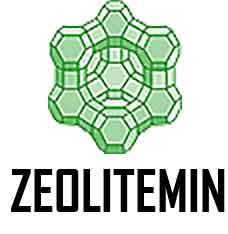
Heavy Metals Proactive – a weekly commodity report for zeolite.
According to Heavy Metals Proactive, a weekly commodity report, This week we are moving away from metals and digging into the mineral zeolite. If you have never heard of this mineral, there is a good chance that you will have discovered it at some point without noticing. The two-year trial, involving 2,500 cows from several Waikato herds, will test the effectiveness of feeding with synthetic zeolite before calving to reduce milk fever and improve reproductive performance.
After a while of effective field testing, many feed suppliers and end customers use zeolite in additives 2-5 in their feed programs. General improvement of the development and well-being of living beings fed with these substances. The study is a collaboration between Dairynz, Cognosco Research Division, ANEXA Animal Health, and Morrinsville Pillars New Dairy Systems Research Program. It is collected and financed by New Zealand dairy farmers and the Ministry of Economy, Innovation, and Employment (MBIE).Zeolite is a mineral raw material that is widely used throughout the continent. There are many forms of zeolites and in the last 200 years over 40 natural zeolites have been identified. One of the most common and useful species is clinoptilolite or zeolite.
How to Work by UZ-min Zeolite
UZ-min Zeolite is unique in that it contributes in many ways to the general maintenance of the health, vitality, and digestion of horses. It is the mother of all detoxifications, and when added to the feed, it works to purify the horse. Mixing with horse feed increases the absorption of nutrients in everyday food supplements and frees the horse’s body from unwanted toxins. Feeding with synthetic zeolite bypasses dairy cows and alters neutrophilic gene expression. Journal of Dairy Science 101, Supplement 2: 175, Abstract 150. Effects of feeding with synthetic zeolite on the minerals of the preparation index, metabolic status, milk production, reproduction, and grazing of dairy cows. It is a mineral that, when dug into the ground, looks very much like light gray gravel. Like most gravel species, it is microporous, which means that it has many tiny holes. These holes allow the zeolite to act as a natural filter.
The outbreak of the COVID-19 pandemic has affected the demand for zeolite-based products. This was due to the increasing disruption of supply chains caused by the complete closure of various cities. Manufacturers had to invest a hefty sum to maintain their production capacity and boost growth.
Applications
Depending on the application, the market is divided into natural and synthetic. In the animal feed subsegment, the natural segment held 28.2% of the zeolite market share in 2019. In the catalysts subsegment, however, the synthetic segment achieved a market share of 19.3% in the same year. The growth is due to the increasing use of zeolite in feed additives for poultry, pigs, sheep, cattle, dairy cows, etc. North America earned $7.485 million in 2019.
Reference
- Where to buy bulk zeolite sand from?
- Uses and Benefits of Zeolite Minerals
- Development of zeolites in the field of human body
- What is the Best Zeolite?
- How does zeolite compare in animal feed mixes?
- How to use natural zeolite in livestock?
- Clay minerals – Zeolite Rock from Nature World
- 4A Zeolite was used in the Detergent
- Strong Zeolite Absorbent Improves LNG and LPG Production by CO2
- Zeolites offer additional advantages as turf fills
- What are Zeolite Antimicrobials?
- Discovery: New Function of Zeolite – Drug-Removing Properties
- Zeolite Mineral-Thanks for the Gift from Earth
- Uses and Benefits of Zeolite Minerals
- How to Remove heavy metals in the Industrial environment
